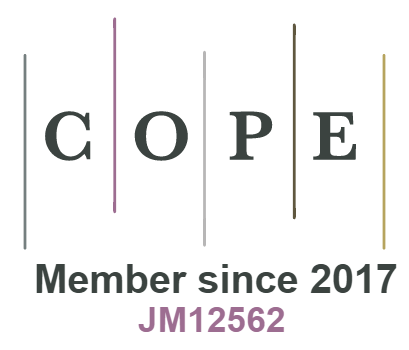AUTOSAR Classic vs. AUTOSAR Adaptive: A Comparative Analysis in Stack Development
DOI:
https://doi.org/10.18034/ei.v7i2.711Keywords:
AUTOSAR, Stack Development, Embedded Systems, Automotive Software, Real-time Operating SystemsAbstract
This study aims to clarify the advantages, disadvantages, and implications of the AUTOSAR Classic and AUTOSAR Adaptive frameworks for stack development in the automotive software engineering domain. The study's primary goals are to examine the design concepts, performance traits, development processes, and implementation difficulties of the AUTOSAR Classic and AUTOSAR Adaptive frameworks. The methodology consists of a thorough literature evaluation, an analysis of market trends, a look at development workflows, and case studies highlighting implementation issues and their resolutions. The key findings show how the AUTOSAR Classic and AUTOSAR Adaptive frameworks differ in architecture, performance, resource usage, and development process. Recommendations for standardization, funding for education and training, R&D, and regulatory frameworks are among the policy implications that support the uptake and advancement of AUTOSAR technologies in automotive software engineering. This report is an invaluable resource for those involved in the automotive sector, legislators, and industry associations trying to make sense of the complicated world of stack development and mold the course of automotive software engineering.
Downloads
References
Ande, J. R. P. K., & Khair, M. A. (2019). High-Performance VLSI Architectures for Artificial Intelligence and Machine Learning Applications. International Journal of Reciprocal Symmetry and Theoretical Physics, 6, 20-30. https://upright.pub/index.php/ijrstp/article/view/121
Anumandla, S. K. R. (2018). AI-enabled Decision Support Systems and Reciprocal Symmetry: Empowering Managers for Better Business Outcomes. International Journal of Reciprocal Symmetry and Theoretical Physics, 5, 33-41. https://upright.pub/index.php/ijrstp/article/view/129
Bouaziz, R., Lemarchand, L., Singhoff, F., Zalila, B., Jmaiel, M. (2018). Multi-objective Design Exploration Approach for Ravenscar Real-time Systems. Real-Time Systems, 54(2), 424-483. https://doi.org/10.1007/s11241-018-9299-6
Bril, R. J., Altmeyer, S., van den Heuvel, M. M. H. P., Davis, R. I., Behnam, M. (2017). Fixed Priority Scheduling with Pre-emption Thresholds and Cache-related Pre-emption Delays: Integrated Analysis and Evaluation. Natural - Time Systems, 53(4), 403-466. https://doi.org/10.1007/s11241-016-9266-z
Durisic, D., Staron, M., Tichy, M., Hansson, J. (2019). Assessing the Impact of Meta-model Evolution: A Measure and its Automotive Application. Software and Systems Modeling, 18(2), 1419-1445. https://doi.org/10.1007/s10270-017-0601-1
Haeusler, M., Trojer, T., Kessler, J., Farwick, M., Nowakowski, E. (2019). ChronoSphere: A Graph-based EMF Model Repository for IT Landscape Models. Software and Systems Modeling, 18(6), 3487-3526. https://doi.org/10.1007/s10270-019-00725-0
Khair, M. A. (2018). Security-Centric Software Development: Integrating Secure Coding Practices into the Software Development Lifecycle. Technology & Management Review, 3, 12-26. https://upright.pub/index.php/tmr/article/view/124
Koehler, S., Dhameliya, N., Patel, B., & Anumandla, S. K. R. (2018). AI-Enhanced Cryptocurrency Trading Algorithm for Optimal Investment Strategies. Asian Accounting and Auditing Advancement, 9(1), 101–114. https://4ajournal.com/article/view/91
Maddula, S. S. (2018). The Impact of AI and Reciprocal Symmetry on Organizational Culture and Leadership in the Digital Economy. Engineering International, 6(2), 201–210. https://doi.org/10.18034/ei.v6i2.703
Maddula, S. S., Shajahan, M. A., & Sandu, A. K. (2019). From Data to Insights: Leveraging AI and Reciprocal Symmetry for Business Intelligence. Asian Journal of Applied Science and Engineering, 8(1), 73–84. https://doi.org/10.18034/ajase.v8i1.86
Mosterman, P. J., Zander, J. (2016). Cyber-physical Systems Challenges: A Needs Analysis for Collaborating Embedded Software Systems. Software and Systems Modeling, 15(1), 5-16. https://doi.org/10.1007/s10270-015-0469-x
Mubeen, S., Nolte, T., Sjödin, M., Lundbäck, J., Lundbäck, K-L. (2019). Supporting Timing Analysis of Vehicular Embedded Systems Through the Refinement of Timing Constraints. Software and Systems Modeling, 18(1), 39-69. https://doi.org/10.1007/s10270-017-0579-8
Mullangi, K. (2017). Enhancing Financial Performance through AI-driven Predictive Analytics and Reciprocal Symmetry. Asian Accounting and Auditing Advancement, 8(1), 57–66. https://4ajournal.com/article/view/89
Mullangi, K., Maddula, S. S., Shajahan, M. A., & Sandu, A. K. (2018). Artificial Intelligence, Reciprocal Symmetry, and Customer Relationship Management: A Paradigm Shift in Business. Asian Business Review, 8(3), 183–190. https://doi.org/10.18034/abr.v8i3.704
Mullangi, K., Yarlagadda, V. K., Dhameliya, N., & Rodriguez, M. (2018). Integrating AI and Reciprocal Symmetry in Financial Management: A Pathway to Enhanced Decision-Making. International Journal of Reciprocal Symmetry and Theoretical Physics, 5, 42-52. https://upright.pub/index.php/ijrstp/article/view/134
Park, J., Kim, H., Jin-Young, C. (2019). Improving TCP Performance in Vehicle-To-Grid (V2G) Communication. Electronics, 8(11), 1206. https://doi.org/10.3390/electronics8111206
Pydipalli, R. (2018). Network-Based Approaches in Bioinformatics and Cheminformatics: Leveraging IT for Insights. ABC Journal of Advanced Research, 7(2), 139-150. https://doi.org/10.18034/abcjar.v7i2.743
Pydipalli, R., & Tejani, J. G. (2019). A Comparative Study of Rubber Polymerization Methods: Vulcanization vs. Thermoplastic Processing. Technology & Management Review, 4, 36-48. https://upright.pub/index.php/tmr/article/view/132
Redondo, J. P., González, L. P., Guzman, J. G., Boada, B. L., Díaz, V. (2018). VEHIOT: Design and Evaluation of an IoT Architecture Based on Low-Cost Devices to Be Embedded in Production Vehicles. Sensors, 18(2), 486. https://doi.org/10.3390/s18020486
Richardson, N., Pydipalli, R., Maddula, S. S., Anumandla, S. K. R., & Vamsi Krishna Yarlagadda. (2019). Role-Based Access Control in SAS Programming: Enhancing Security and Authorization. International Journal of Reciprocal Symmetry and Theoretical Physics, 6, 31-42. https://upright.pub/index.php/ijrstp/article/view/133
Rodriguez, M., Tejani, J. G., Pydipalli, R., & Patel, B. (2018). Bioinformatics Algorithms for Molecular Docking: IT and Chemistry Synergy. Asia Pacific Journal of Energy and Environment, 5(2), 113-122. https://doi.org/10.18034/apjee.v5i2.742
Sandu, A. K., Surarapu, P., Khair, M. A., & Mahadasa, R. (2018). Massive MIMO: Revolutionizing Wireless Communication through Massive Antenna Arrays and Beamforming. International Journal of Reciprocal Symmetry and Theoretical Physics, 5, 22-32. https://upright.pub/index.php/ijrstp/article/view/125
Shajahan, M. A. (2018). Fault Tolerance and Reliability in AUTOSAR Stack Development: Redundancy and Error Handling Strategies. Technology & Management Review, 3, 27-45. https://upright.pub/index.php/tmr/article/view/126
Tejani, J. G. (2017). Thermoplastic Elastomers: Emerging Trends and Applications in Rubber Manufacturing. Global Disclosure of Economics and Business, 6(2), 133-144. https://doi.org/10.18034/gdeb.v6i2.737
Uslar, M., Rohjans, S., Neureiter, C., Andrén, F. P., Velasquez, J. (2019). Applying the Smart Grid Architecture Model for Designing and Validating System-of-Systems in the Power and Energy Domain: A European Perspective. Energies, 12(2), 258. https://doi.org/10.3390/en12020258
Vedder, B., Vinter, J., Jonsson, M. (2018). A Low-Cost Model Vehicle Testbed with Accurate Positioning for Autonomous Driving. Journal of Robotics, 2018. https://doi.org/10.1155/2018/4907536
Yarlagadda, V. K., & Pydipalli, R. (2018). Secure Programming with SAS: Mitigating Risks and Protecting Data Integrity. Engineering International, 6(2), 211–222. https://doi.org/10.18034/ei.v6i2.709
Ying, D., Patel, B., & Dhameliya, N. (2017). Managing Digital Transformation: The Role of Artificial Intelligence and Reciprocal Symmetry in Business. ABC Research Alert, 5(3), 67–77. https://doi.org/10.18034/ra.v5i3.659
Downloads
Published
Issue
Section
License
Copyright (c) 2019 Mohamed Ali Shajahan, Nicholas Richardson, Niravkumar Dhameliya, Bhavik Patel, Sunil Kumar Reddy Anumandla, Vamsi Krishna Yarlagadda

This work is licensed under a Creative Commons Attribution-NonCommercial 4.0 International License.
Engineering International is an Open Access journal. Authors who publish with this journal agree to the following terms:
- Authors retain copyright and grant the journal the right of first publication with the work simultaneously licensed under a CC BY-NC 4.0 International License that allows others to share the work with an acknowledgment of the work's authorship and initial publication in this journal.
- Authors are able to enter into separate, additional contractual arrangements for the non-exclusive distribution of the journal's published version of their work (e.g., post it to an institutional repository or publish it in a book), with an acknowledgment of its initial publication in this journal. We require authors to inform us of any instances of re-publication.









